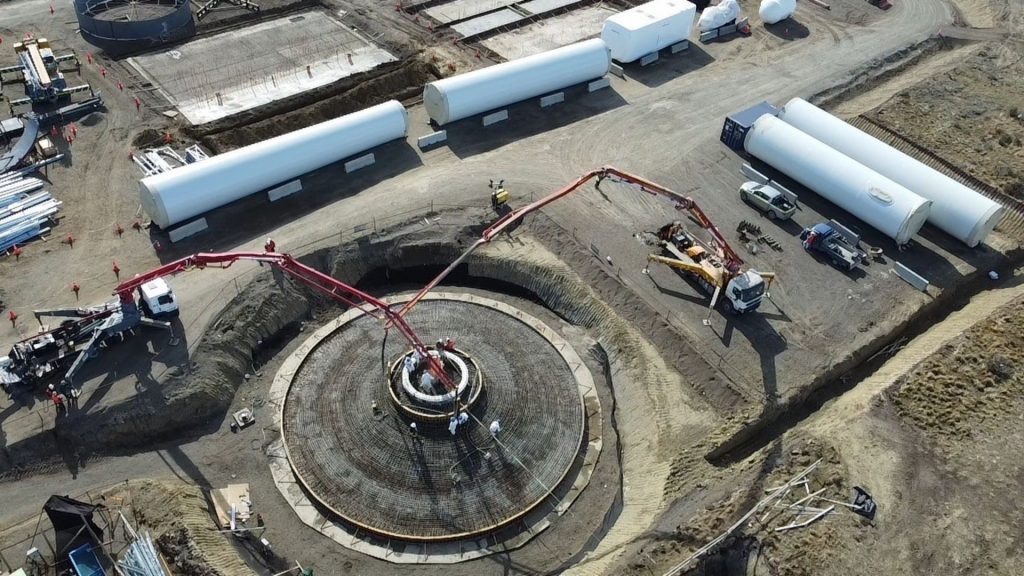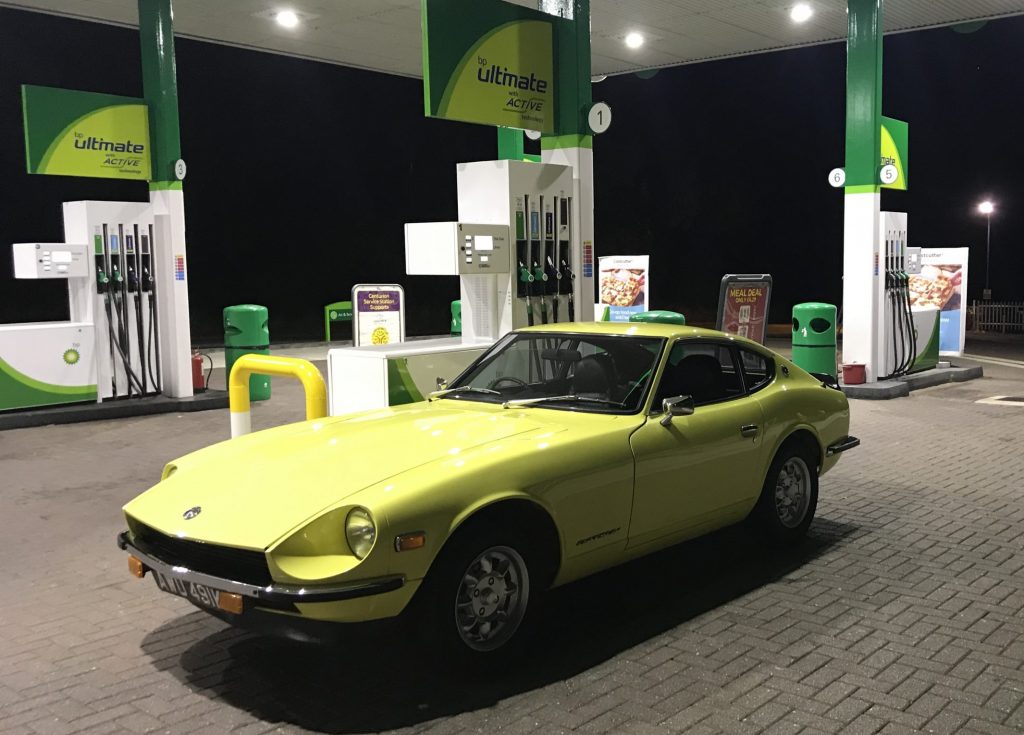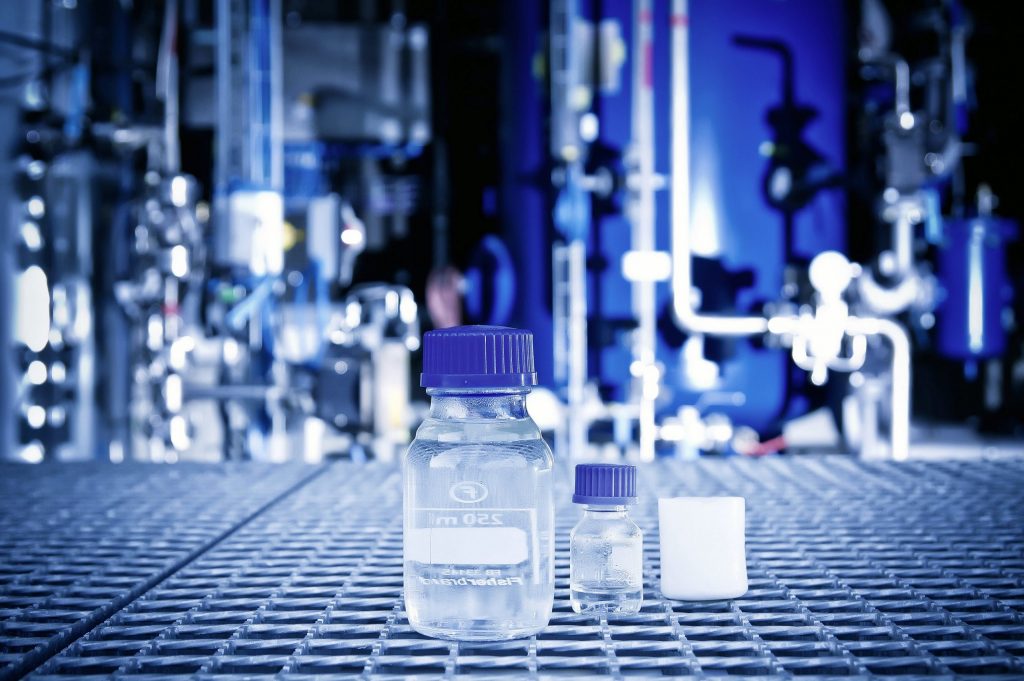Artificially made petrol and diesel, often called synthetic fuels or e-fuels, have been hailed as a potential saviour of the internal combustion engine as laws change to outlaw the burning of fossil fuels. Now, a new review period from the European Commission will give those pursuing the technology until 2026 to prove that e-fuels can meet the EU’s emissions reductions targets – a potential reprieve for a solution that previously seemed ignored in favour of electrification.
In an announcement made on June 29, the Council of the EU revealed its proposals for the EU’s ‘Fit for 55‘ package, aimed at reducing greenhouse gas emissions by at least 55 per cent by 2030 compared to 1990 levels, with carbon neutrality by 2050.

No new combustion-engined cars can be sold after 2035 under current targets. But in 2026, the EU will “assess the progress made towards achieving the 100 per cent emission reduction targets and the need to review these targets”, giving those investing in technologies like plug-in hybrids and e-fuels another four years to prove they can contribute to that 100 per cent target by 2035.
If they can, e-fuels could become a genuine alternative to plug-in vehicles, and help keep the current automotive fleet on the road long into the future.
Supporters of e-fuels say the process is CO2 neutral – the idea being that any carbon emitted during combustion has previously been extracted from the atmosphere, rather than the ground – but, as recently as 3 June, the European Commission only saw a use for it in the heavy transport industry.
Manufacturers like Porsche are heavily invested in e-fuel (or synthetic fuel) production, having recently spent £57 million on a new joint venture developing facilities in South America.

Plants like that used by Porsche use renewable electricity from wind turbines to generate hydrogen, which is split from water, converted into methanol through filtration of CO2 and then remade into petrol. In other words, the work put in to filter out the CO2 ‘cancels out’ the carbon footprint of its extraction. Audi invested in a similar process in 2017, and Mazda joined the eFuel Alliance last year.
Porsche reckons that its pilot e-fuel scheme, launched in 2020, could produce 55 million litres by 2024, and around 550 million litres by 2026, at a cost of around £1.50 a litre (a figure that sounded expensive at the time, but now sounds very reasonable). It has been using e-fuel in its motorsport fleet and in Porsche Experience Centres to demonstrate the fuel’s viability.
Things get a little more complicated in the UK, where sales of new petrol and diesel cars will stop in 2030, five years before the deadline imposed by the EU. This is Money notes that, despite its departure from the bloc in 2020, the UK has continued to mirror EU emissions regulations. With a shorter timeframe in place than the one laid out by the European Commission, however, the race is on to prove the efficiency of e-fuels in the UK as soon as possible.
As such, several UK firms are already well underway with e-fuels projects ahead of any potential roll-out in the UK. Jaguar specialists, CKL Developments, ran a low-drag E-type at Goodwood in June, using e-fuel supplied by producer, Coryton, and two days before the European Commission’s announcement, it appeared at the All Party Parliamentary Historic Vehicle Groups’ Motorsports Day at the Houses of Parliament. It was well received by MPs – and industry lobbying group the Historic and Classic Vehicles Alliance (HCVA), an e-fuels advocate, was encouraged by the response.
Its director, Guy Lachlan, said: “Using sustainable and synthetic liquid fuels is clearly vital for the future of classic motoring. It has been a very successful day with much support and understanding from legislators, who are increasingly understanding that investment must be deployed in technologies such as future liquid fuels, and not just electrification.”

Historic vehicle campaigners in the UK welcomed the news that e-fuels could provide a lifeline for petrol and diesel classics. Wayne Scott, Communications director for the Federation of British Historic Vehicle Clubs, told Hagerty: “The historic vehicle community is interested and excited by the prospect of any fuel technology that allows internal combustion engines to run unhindered and with a reduced carbon output.
“Ensuring cars that we have already built remain on the roads is a key part of reducing our consumption and the significant carbon impact of manufacturing new vehicles. The challenges in supplying infrastructure for a mass roll-out of electric vehicles as daily transport, coupled with our concern for the protection of motoring heritage, means that we would like to see investment being put into a range of fuel and motive power options in the future, particularly if it safeguards supply for heritage internal combustion engines long into the future.”
Dominic Taylor-Lane, of the Association of British Heritage Engineers, said that the reprieve for e-fuels made sense from a sustainability standpoint.
“I think [e-fuels] should be a major part of any future transport strategy. If something is already built, in most cases, it is already more sustainable. The infrastructure and skills around the planet to support ICE is already in place and providing livelihoods to millions. Many see current EV vehicles as an intermediate technology, resources to build them are limited and with that prices will inevitably rise.
“If we are genuine about a sustainable future we need to build better, build less, maintain and make things last as long as is possible. Ever increasing production and consumption is not the answer. If e-fuel can help us to do that, and diversify the options, then I truly hope it is given a real chance,” he told Hagerty.

While classic car enthusiasts were celebrating the reprieve in Brussels, both sides of the e-fuel debate had things to say. The European Association of Automotive Suppliers, welcomed the opportunity. Sigrid de Vries, Secretary General, said: “We are glad to see support from Council for vehicles running on renewable fuels. Whereas we will see a vast deployment of electric vehicles, there are practical, ready to use solutions available for hybrid vehicles, as well as for the existing cars, vans and trucks on the road, which so far have not found sufficient political support. We are looking forward to continuing the dialogue with the European Commission.”
Autocar noted that, for e-fuels to be accepted as renewable, it would have allow cars running it to produce CO2 from their tailpipes – regarded as unacceptable in the ‘Fit for 55’ framework.
Frans Timmermans, European Commission Vice President and a key player in the European Green Deal document which brokered ‘Fit for 55’, remained wary as to the effectiveness of e-fuels. He said: “These fuels will never ever be available in sufficient quantities. They will be more expensive at the petrol pump, far more expensive than driving an electric car.
“They will take six times the energy to produce compared to the battery in a car, even then engines would still pollute the air that our citizens breathe… But if a manufacturer can prove otherwise, it’s up to them to do so, and the Commission will have an open mind.”
It will be an agonising wait, but the next four years should give us some indication of whether e-fuels can come to the rescue of combustion-powered vehicles from 2030 and beyond.
Read more
F1’s switch to synthetic fuel in 2025 could safeguard the classic car scene
Will synthetic fuels ride to the rescue of classic cars?
Government minister seeks to reassure classic car drivers and wider industry










Regarding E10 fuels, I will make comment on behalf of my Disabled daughter. She currently drives a Hyundai Kona Hybrid registered last year, since the change from E5, she has noticed a sudden drop in economy. There is nothing wrong with the car, it’s maintained to the highest standards in line with Motability demands.
Her consumption has dropped by almost 6mpg even driving to the extreme that a hybrid can. Yet there is no way to improve the mileage. She has resorted to trying additives to no avail, so our only conclusion can be that modern fuels do not meet the needs of the driver.
With being fleeced over pricing, it sees drivers are being further ripped off just to meet spurious demands set by Europe.
So in conclusion, not only are Classic car owners being put at risk of harm to vital components through E10 fuels degradation, it would seem that modern cars may too be in jeopardy.
Interesting to see that no government or the EU is willing to take into account the CO2 emitted in the production of EVs, the digging up of rare earth metals, the shipping of such metals, the manufacture of wind turbines which have to be renewed every 25 years, and the fact that EVs have half the life of ICE vehicles.
On the latter point it’s no wonder the car makers are rushing to switch to EVs.
The problem with the my whole foundation of this drive for “non greenhouse gas” fuels, is that existing fuels & combustion engines are not “greenhouse”. It’s all built on a false foundation. How can this ever get through to the mainstream?
In Response to Brian Bremer,
Your comments point to 2 very distinct topics when looking at fuel technology;
1. Compatibility – It is true that some older model vehicles do suffer from the effects of certain oxygenates, in this topic Ethanol, on the fuelling systems. Some older cars are being adapted, with updated rubbers and plastics, though it’s not always practical, or desirable to do this in order to preserve the history of the vehicle. It’s in this particular instance where some of the more novel fuel chemistries come to the rescue, bio/e-fuel/synthetic does not necessarily mean that it contains aggressive oxygenates (ethanol/methanol etc) even if they are made from this. Through conversion technologies, you change the molecular construction, and produce a “typical” hydrocarbon structure, removing the “low energy dense” oxygen molecule, or to put it simply an oxygenate free petrol. These technologies are perfect for the classics markets and as you’ll see in the article are already being used!
2. Energy density of fuels – I’ll talk specifically about ethanol, as this is what the “E10” is referring to in practice. Yes Ethanol in it’s natural chemical structure is approx. 30% less energy dense per litre than a standard hydrocarbon petrol, however as this is only in fuel at “upto” 10%, the most it can impact the total energy density of the fuel is between 1-3%, this in real world practice is almost imperceptible to the every day driver. If we take an example, running a vehicle entirely on ICE at an average of 45mpg, that would mean you are losing between 0.5 – 1.5mpg. There are other factors that affect mpg figures in far greater measures, such as temperature, condition of the oil, drive cycles, loads, tyres etc, also as a hybrid, battery condition becomes an important factor.
I will end with a note on Hybrid technology. This technology will have a far greater positive impact on the environment vs BEV’s in our short and mid-term futures. It allows a greater spread and adoption of using electrical propulsion in the majority of travel scenarios, whilst still providing long range capability for those holiday drives or family visits or those in rural settings. One last point, to bust a myth, there is no weight penalty in “dragging” around an ICE motor in a hybrid vehicle – a like for like ICE vs battery drivetrain (+battery) is similar in weight, at the worst case the difference of a full tank of fuel…